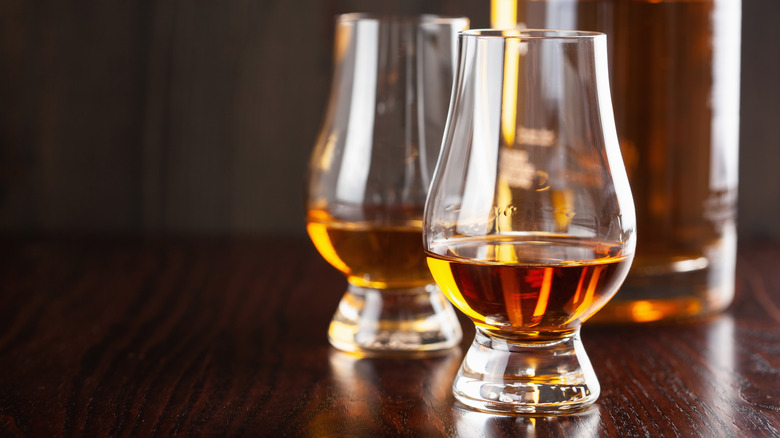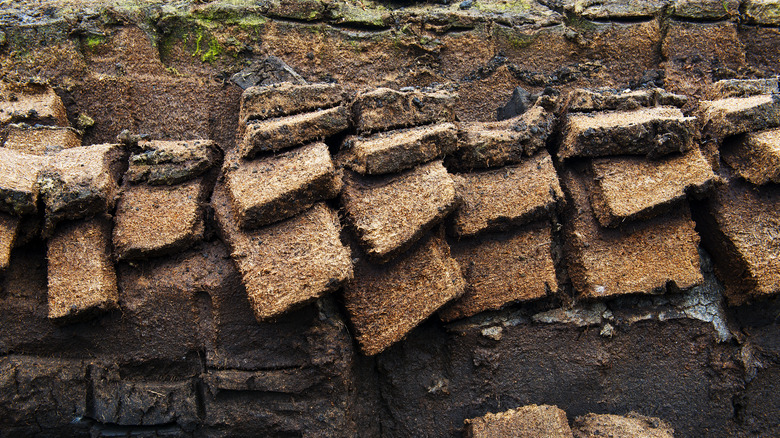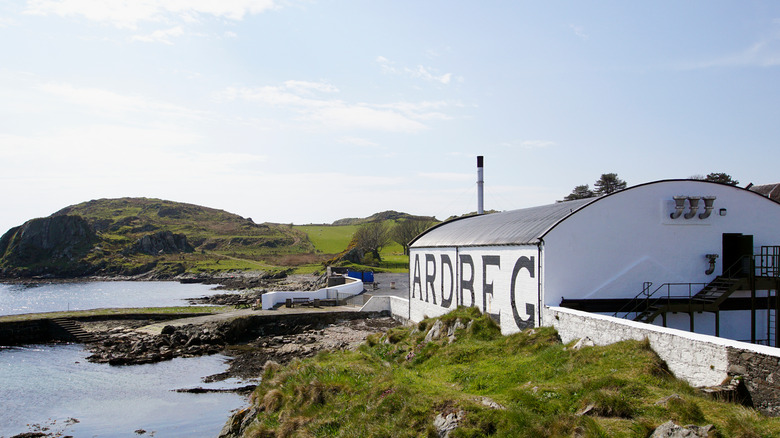How Peated Whisky Gets Its Distinct Flavor Profile
Peat whisky can be associated with whisky labels coming out of Scotland, Japan, Finland, Sweden, Ireland, Australia, India, and the United States (via The Flatiron Room). Found in wetland areas, peat is made up of dense layers of grass, moss, and heather that have been left to decay for centuries — we're talking up to 5,000 years (via Science Direct).
Peat can vary depending on the location and the kinds of plants packed into the ground, but the softest, newest layers of peat sit on top of the earthen mounds. Whisky.com explains the peat is dug up in small slices and stacked to dry until hard briquettes form — it's like coal, with the energy of the decayed plants ready to be set on fire. While peat has been used as fuel, particularly in Scotland, notes The Flatiron Room, distillers use peat to dry and flavor barley malts used to make different types of whisky.
The smoky flavor comes from burning peat
Per World Whisky Day, the smoky flavor of peated whisky is derived from the compounds released by burning peat. No, burning peat isn't placed into whiskey barrels. Instead, peat is burned beneath the kilns in which whisky malts are left to dry and roast. As rich smoke from the peat rises, the malt grains are dried, leaving them with a unique, earthy flavor. The process can take up to 15 hours as the aromas fully infuse the malt grains with smoky notes resulting from ashy-tasting phenols.
According to Drink Hacker, these phenols are a complicated class of aromatic compounds that can include phenol, cresols, xylenol, and guaiacol, with each influencing whiskies' flavors in unique ways. However, they don't necessarily correspond to the smokiness of a whisky, according to Distiller, who offers the example of Lagavulin and Caol Ila as comparative examples.
While both labels use the same peated barley to make whisky, the final product varies in levels of smokiness. This is because phenols deviate throughout the whisky production process, specifically when they are in the barrel, where they are able to "fully oxidize, becoming more complex" per Drink Hacker.
Peated whisky can be earthy, medicinal, or smoky
According to Thrillist, the peatiest scotches are associated with certain regions of Scotland, one by the name of Islay, where distilleries use peated barley to produce rich, smoky barrels of whisky. And it's not just the peated barley itself but also the water used; these Scottish distilleries filter the water used to make whisky through peat, turning up the robust flavor of the brews' earthy, brine-like taste.
So as you can tell, there's a lot that goes on to create the distinct flavor behind whisky — making it "a complex science and art," writes David Cover (via Drink Hacker). The shape of the still, the type of peat used, and the region that the peat is taken from can all lend subtle characteristics to the drams of peated whisky you end up pouring. From earthy to spicy, medicinal to mossy, different flavors can arise within the finished batches of whisky. And as Whisky and Wisdom notes, it's entirely possible to have a result that is peaty without tasting smoky, and there are certain qualities you may taste but not necessarily smell — and vice versa.
So while it may take some trial and error to find your favorite peated whisky, remember that no peat is created the same — giving you a wide spectrum to choose from.


